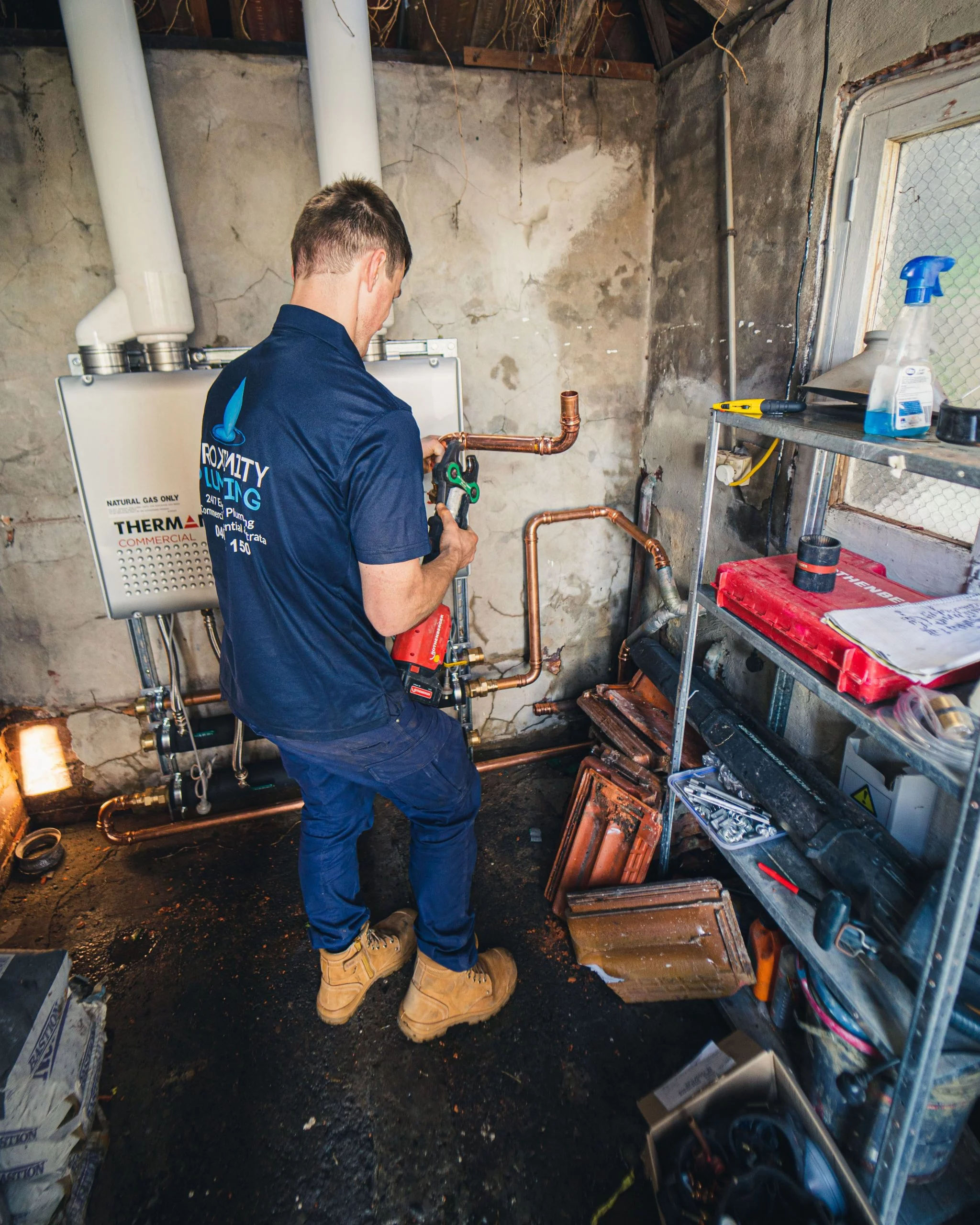Is Your Heater Ready For Winter
- William Demirdonder
- Dec 26, 2020
- No comments
- 15-minute read

Your home’s how water heater has never been more appreciated than after a Wintery walk along Bondi Beach and jumping into a nice hot shower.
To protect your hot water system this Winter and keep your morning showers toasty warm, here are 5 quick tips you can do yourself to check your hot water heater heater is operating at its best.
[Side note: the best way to ensure your hot water system is functioning at 100% is to book in an expert appointment with your local eastern suburbs plumber – that’s us – but there are a few things you can do yourself right now].
Basically, if the temperature or pressure builds up too much inside your hot water tank, it can cause leaks, shorten the life of your heater and possibly explode (worst case scenario).
The temperature and pressure relief (TPR) valve are designed to automatically open and release excess pressure.
To check this value make sure you shut off the water and power supply to your property before placing a bucket under the drain pipe connected to the valve.
Lift the tab attached to the valve and allow some water to escape, then, close it again. If little or no water comes out when the valve is open, or if water continues to run after it has been closed, the valve most likely needs replacing.
There is a magnesium or aluminium rod inside your tank which helps to protect against rust. Essentially the rod attracts corrosive elements in water so that it rusts before the tanks rusts!
These rods typically last 3 – 5 years and you do need to replace the rod once it’s rusted to make sure the tank doesn’t start to rust.
To check the rod, make sure the power and water supply are off, then unscrew the rod’s hex head located on the top of the tank with a 1 1⁄16-inch socket.
Pull the rod out of the tank (this could take a bit of muscle). If it’s down to ½” in diameter or less, replace it with a new one – which can be purchased at most hardware stores).
Before we move onto Tip #3, if you’d like to see a little case study about a hot water replacement that our team managed recently in Potts Point, click here. And to read a quick case study from a job in Bondi, click here.
Do you know what lies at the bottom of your hot water tank? Like the bottom of the ocean – sediment and sand can accumulate, making it more difficult for the system to heat the water. The harder your heater has to work, the shorter the life span!
You can flush the tank by attaching a hose to the drain valve located near the bottom of the tank.
Place the other end of the hose in a floor drain or somewhere outside your property. With the water supply turned off and the power shut off (or the thermostat set to pilot for gas models) open the drain valve.
Once the tank is empty, briefly turn the water supply back on to stir up the sediment at the bottom and allow it to drain.
You can repeat the process until the water runs clear. Voila – you have successfully flushed the tank! Aim to repeat this process 1 – 2 times per year.
To prevent unnecessary heat loss and reduce your water heating costs this winter, you may want to insulate your tank and pipes.
You can find foil insulating blankets at most home improvement stores.
Cut it to fit around the pipes, valves, and thermostat on your heater. Wrap the blanket around the walls of the tank, sealing it using foil tape.
The top of gas water heaters should not be covered, but electric models can be capped with an oversized round piece of blanket taped down to the sides of the tank.
Did you know you can save as much as 5% on your energy bill for every 10 degrees difference on your thermostat?
Adjusting the thermostat can also prevent scalding and ensure that you have a nice hot shower, every time.
The recommendation temperature is 120 degrees Fahrenheit (49 degrees Celsius) for hot water tanks.
If the time has come to replace your home’s hot water heater, you may be deciding between a gas or electric hot water heater. We have an article that will give you more information and help you to make a decision on what is best for your family, you can find it here.
What is continuous flow hot water systems we hear you ask? To understand this option and how they work, click here.
Wondering when that time to replace your hot water heater will come? There are some warning signs to look out for. These signs will show you that the time to take action is NOW. Get all the info on the warning signs here.
If you have any questions about your home’s hot water heater and whether or not you should replace it, our team at Proximity Plumbing are happy to inspect it, and offer our professional opinion.
We all take hot water for granted until we don’t have it! So make sure you keep your hot water flowing all Winter with these 5 quick tips.
Thoroughly checking your hot water tank is part of every Proximity Plumbing’s plumbing maintenance service. So if you want to get expert eyes on your hot water system, call us today on 0420 102 394 for a free quote, or book online here. Plus we guarantee to be on-site within the eastern suburbs in 30 minutes.
Understanding your home insurance and what you are covered for when it comes to plumbing can be overwhelming. Do you have cover if the land mower of your neighbour damages part of your pipeline?....
Read MoreFatbergs are created when you flush down wet wipes or “flushable” wipes down the toilet and they get caught up in your pipes with a combination of any oils, fats or grease poured down the ....
Read MoreImagine you’re in the midst of a plumbing emergency (we’ve all been there) and you desperately need an ace plumber on your door step. We doubt in the middle of a plumbing emergency you&rs....
Read MoreIrrespective of how hard you try, sometimes a toilet or bathroom clog is unavoidable. Whatever might be the reason for the clog, you need to clear the same. When you wish to fix the problem, a plunger....
Read More



Leave a Reply
Your email address will not be published. Required fields are marked *